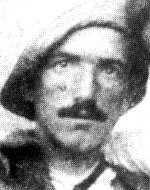Segalowicz, Moshe
Son of Sarah and Ephraim Halevi, he was born in 1896 in the town of Skidel in the Grodno region of Poland, to parents who fled the horrors of the “storms in the Negev” that took place in southern Russia between 1881 and 1882. Moshe, who did not find his place in the bustle of textile factories that filled the city and turned it into one of the largest industrial centers in the world, approached the Zionist movement and in 1912 immigrated to Eretz Israel. At first he settled in Judea and worked in various agricultural work, mainly related to orchards. From time to time he changed his place of residence according to the location where he found work, but when he heard among the young people of the Yishuv of the “Galilee” he also decided to move to the Galilee settlements. He joined the “Shepherds’ Group” which, like the “Hashomer” Association, saw its mission as preparing young Jews for the conditions of the country and fulfilling a national mission in work and guarding. Moshe was grazing the flocks of farmers in Beit Gan (near Yavne’el), Kinneret and Mitzpeh. For a while he even accompanied the carts and horses of the peasants who had been confiscated by the Turkish army for his various needs. At Beit Gan he found people who liked him and shared his ideas. During the First World War, when the Turkish commander Gamal Pasha planned to attack the Suez Canal, Moses was recruited to Tabur al-Amalia (labor battalions). Life in the army did not please him and on the first occasion he deserted the army. He arrived at Merhavia and was accepted there as a rider. As his friends testified, he was modest in his ways, his speech simple, and he fulfilled all his duties with dedication and courage. The Arabs of the area, who until the arrival of Moshe did in the fields of Merhavia as their own, were very angry with him for accepting the preservation of the fields and decided to bury him. On the 10th of Tammuz (20.6.1918), when he and another guard guarded the fields of Farahia, they heard the noise of an Arab gang, and his question “Who is this?” was answered with a shower of shots. Moshe’s mare was killed but he got to his feet and attacked his assailants but he was killed. He was buried in the Merhavia Cemetery in Kfar Giladi. Years later, when a special graveyard was set up in Kfar Giladi for “Hashomer”, his bones were brought to rest in this cemetery. He left behind his parents, three brothers and four sisters.
